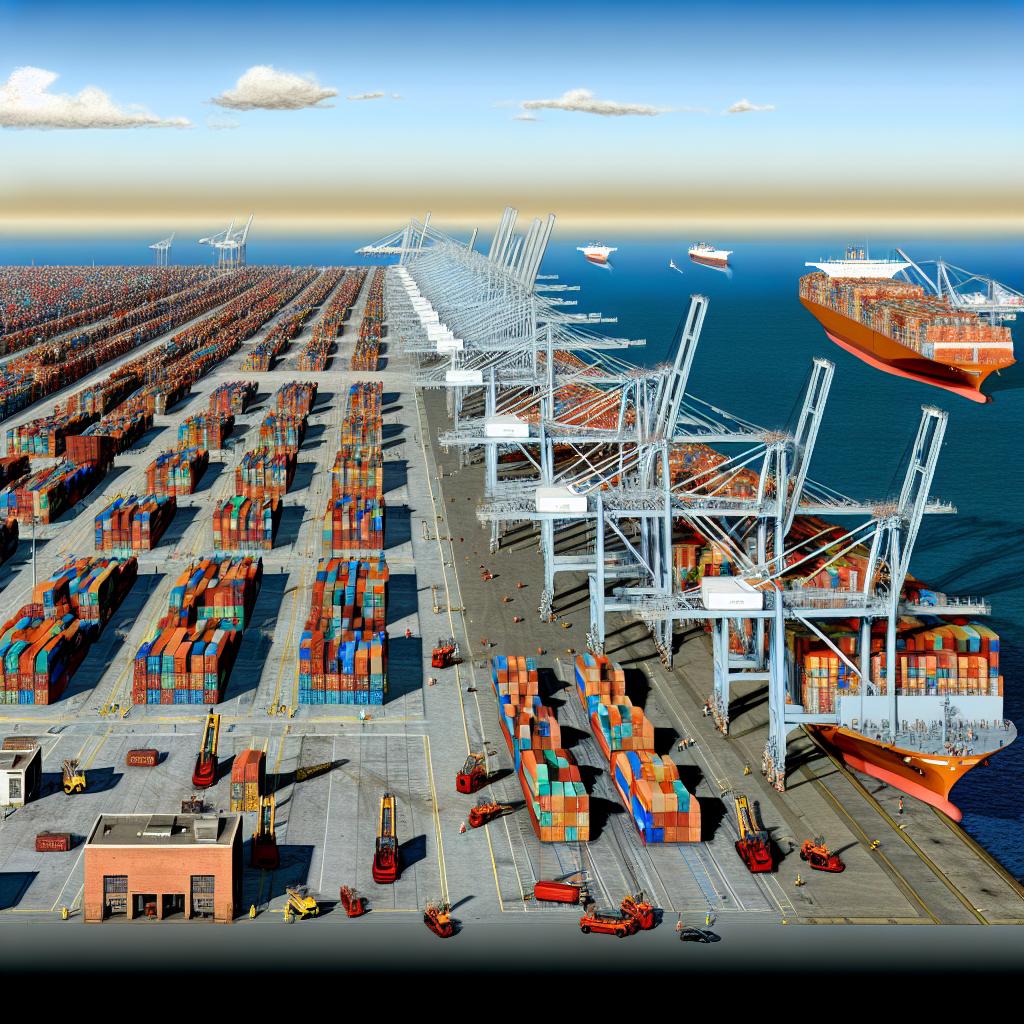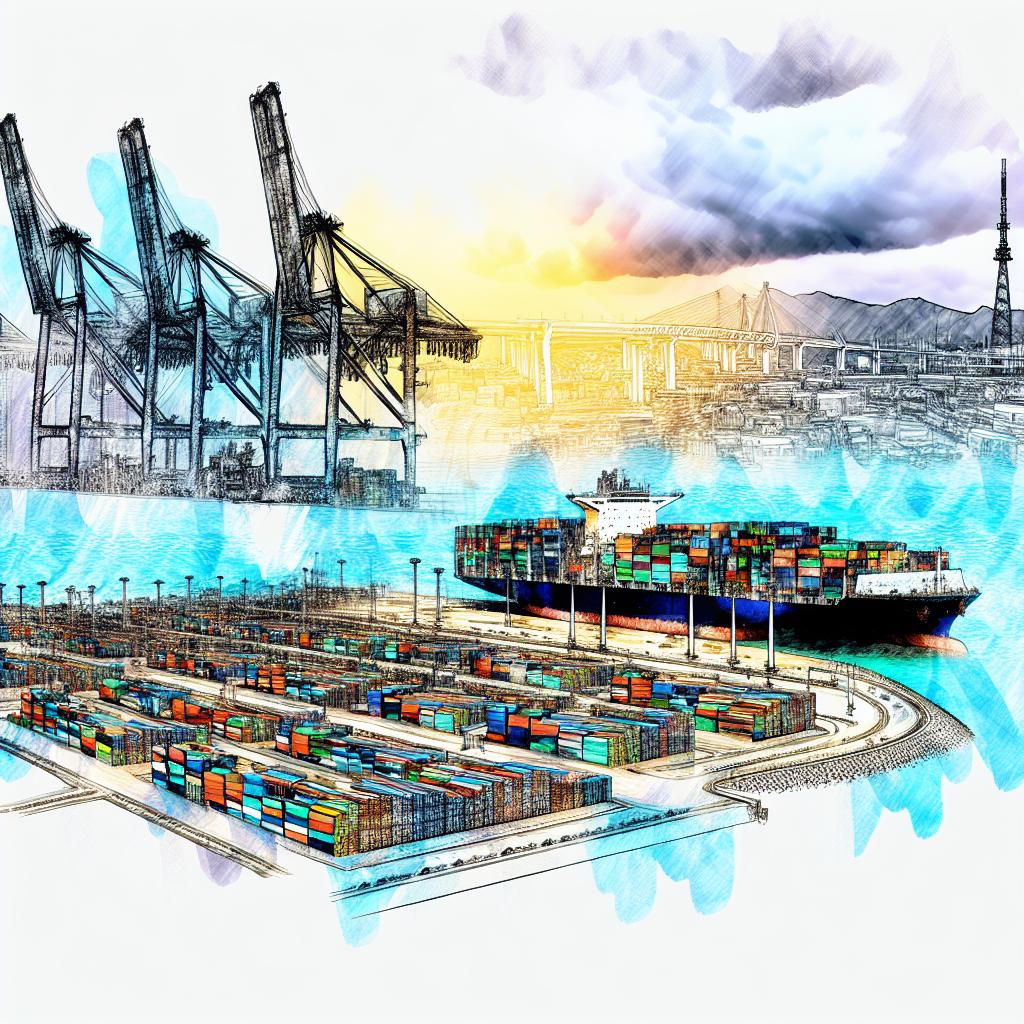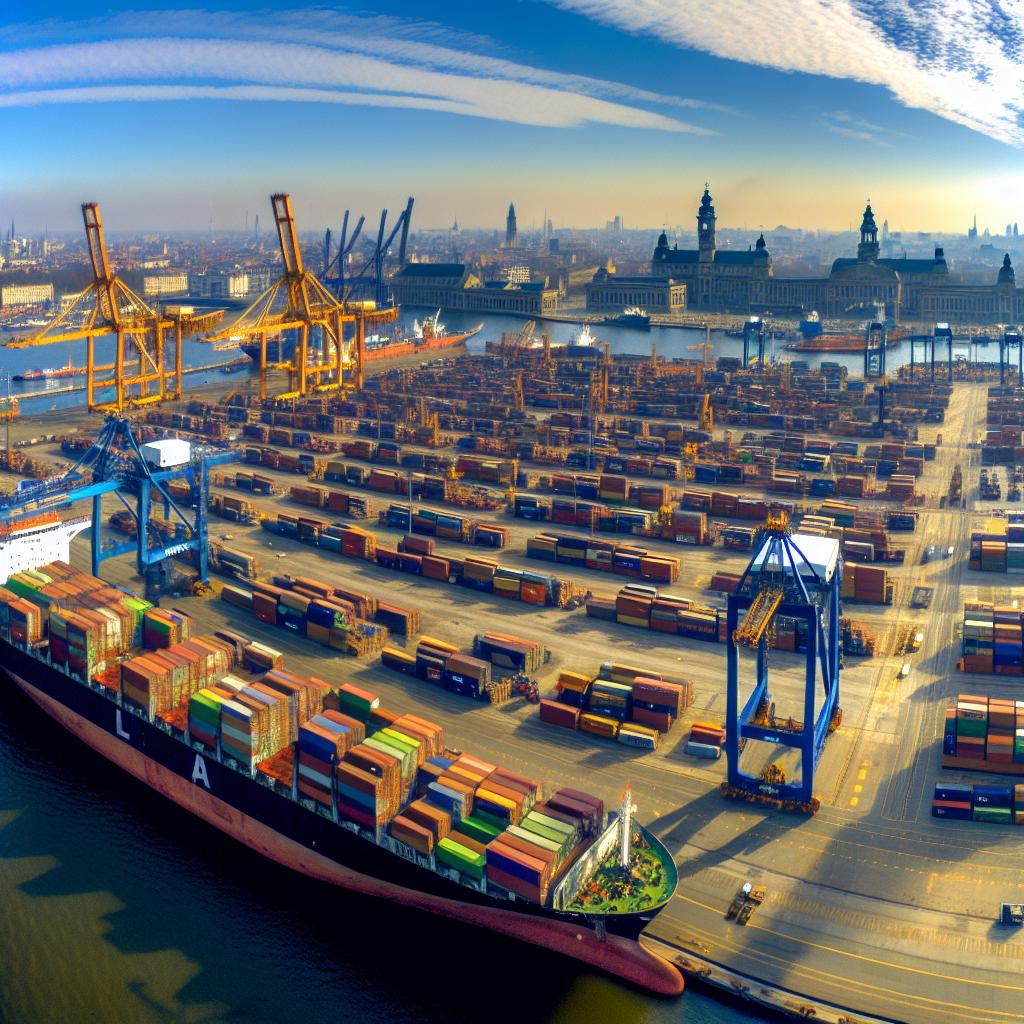“`html
Introduction
The Port of Los Angeles, often dubbed the “Gateway to the Pacific,” stands as a critical hub for maritime trade on the west coast of the United States. Situated in San Pedro Bay, approximately 20 miles south of downtown Los Angeles, this port is the busiest in the Western Hemisphere and plays a pivotal role in international trade.
Historical Background
The origins of the Port of Los Angeles date back to the early 20th century. Officially founded in 1907, it has since evolved from a modest docking area into a sprawling network of facilities and logistics hubs. Its growth is intricately tied to the development of the greater Los Angeles area, being an integral player in the city’s expansion as a major economic center. Indeed, the historical significance of this port is not merely in its existence but in how it has continually adapted and expanded to meet global shipping demands.
The early years of the port saw a gradual increase in shipping traffic, primarily dominated by domestic trade. However, as the decades rolled on, the port became instrumental in facilitating international commerce, particularly from the Pacific Rim. The construction of newer docks and infrastructure during the mid-20th century reflected the growing confidence in the port’s abilities to handle large volumes of freight.
Geographical Significance
Strategically located on the Pacific Rim, the Port of Los Angeles serves as a vital point of entry for goods from Asia and other parts of the world. Its proximity to key markets such as Los Angeles and other major cities on the west coast of the United States provides a distinct logistical advantage. The port’s deepwater facilities allow for the accommodation of some of the largest container ships in operation today, enhancing its capacity and efficiency.
Moreover, the geographical positioning on the Pacific coast offers a shorter and more direct route for Asian exports compared to other US ports, reducing transit times and costs. This logistical edge has positioned the Port of Los Angeles as a primary gateway for products entering the United States, ranging from consumer electronics to automobiles and apparel.
Economic Impact
The economic influence of the Port of Los Angeles is substantial. It not only facilitates billions of dollars in trade annually but also supports a broad range of industries, including logistics, manufacturing, and retail. Thousands of jobs are created both directly and indirectly as a result of port activities, spanning from dock workers and logistics managers to those in manufacturing and retail sectors who rely on the import and export of goods.
Additionally, the revenues generated from port operations provide a significant boost to the local and state economy. The economic ecosystem surrounding the port fuels investment in infrastructure, technology, and human capital. Businesses reliant on efficient shipping routes often establish operations nearby, nurturing a vibrant commercial environment.
Infrastructure and Operations
Spanning over 7,500 acres, the Port of Los Angeles comprises 43 miles of waterfront and approximately 27 cargo terminals. It handles a diverse array of cargo types, with the majority being containerized goods. The port’s advanced infrastructure includes multiple rail yards and state-of-the-art crane systems, ensuring efficient and swift cargo handling.
The operations at the port are meticulously managed to maximize efficiency and safety. Cutting-edge technologies such as automated container tracking systems are employed to streamline operations. The integration of rail systems within the port infrastructure facilitates the rapid and seamless transfer of goods across the continental United States, enhancing the port’s logistical capabilities.
Environmental Initiatives
Recognizing the importance of sustainability, the Port of Los Angeles has implemented several initiatives aimed at reducing its environmental footprint. Programs such as the Clean Air Action Plan have been introduced to cut emissions and promote the use of cleaner technologies in maritime operations. This initiative seeks to address environmental concerns while ensuring that port operations continue unhindered.
Other eco-friendly measures include the use of low-sulfur fuels, shore-side electricity to reduce emissions from docked ships, and enhancement of the port’s green infrastructure. These initiatives underscore a commitment to sustainability and reflect a broader trend within the shipping industry to adopt environmentally responsible practices.
Conclusion
In summary, the Port of Los Angeles is not merely a point of transit but a critical component in the global supply chain. Its strategic location, advanced infrastructure, and commitment to sustainable practices underscore its role as a key player in international trade and regional economic growth. As global commerce continues to evolve, the port will likely remain a linchpin in connecting the United States with the broader Pacific region.
Beyond its current contributions, the future of the port seems poised for even greater significance. Anticipated advancements in shipping technologies and practices will likely be adopted by the port at the forefront of these developments. As trade patterns continue to shift and evolve, the port’s adaptability will be key to maintaining its status as the busiest port in the Western Hemisphere.
“`




